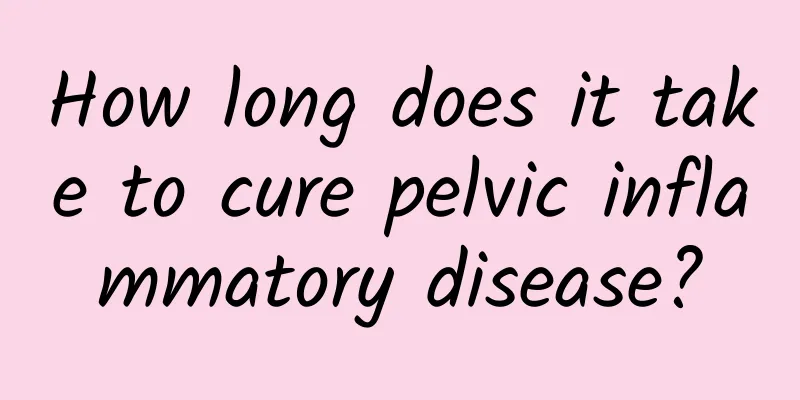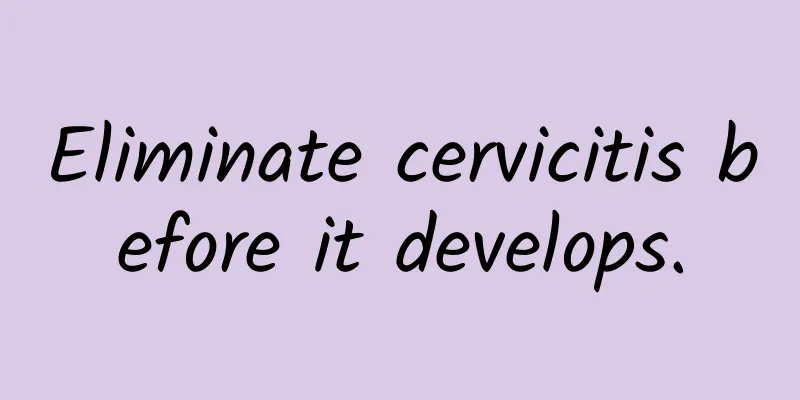How long does it take to cure pelvic inflammatory disease?

|
Pelvic inflammatory disease is a disease that is well known to female friends. It is clinically divided into acute and chronic. Once pelvic inflammation occurs, patients will experience symptoms such as increased vaginal discharge, abdominal pain, and fever, which have a great impact on their lives and work. I hope everyone can pay attention to treatment. So, how long will it take to cure pelvic inflammatory disease? How long it takes to cure pelvic inflammatory disease cannot be determined in one word. The severity of the disease varies, the type is different, and the treatment methods used are different, all of which will affect the final healing time. But no matter what, as long as the patient can find and treat it in time, it can be cured quickly. There are two types of pelvic inflammation: acute and chronic. The symptoms of acute pelvic inflammation are lower abdominal pain, fever, increased vaginal discharge, and persistent abdominal pain that worsens after activity or sexual intercourse. If the condition is severe, there may be chills, high fever, headache, and loss of appetite. Those who develop the disease during menstruation may experience increased menstrual flow and prolonged menstruation. If pelvic inflammation wraps around to form a pelvic abscess, it may cause local compression symptoms. Compression of the bladder may cause frequent urination, painful urination, and difficulty urinating; compression of the rectum may cause rectal symptoms such as tenesmus. Acute pelvic inflammatory disease can further develop into diffuse peritonitis, sepsis, septic shock, and in severe cases, life-threatening. However, if you actively treat it, take daily health care and nursing measures, and use some symptomatic anti-inflammatory drugs, it can be cured in about a week. Chronic pelvic inflammation is caused by the failure to completely treat acute pelvic inflammation or the poor physical condition of the patient, which leads to a prolonged course of the disease. The symptoms of chronic pelvic inflammation are lower abdominal distension, pain and lumbar pain, which are often aggravated after fatigue, sexual intercourse and before and after menstruation. The second is abnormal menstruation and irregular menstruation. Some women may experience neurasthenia symptoms such as lack of energy, general discomfort, insomnia, etc. after a long course of the disease. Compared with acute pelvic inflammation, chronic pelvic inflammation causes greater harm and impact, and requires longer time and experience in treatment, as well as corresponding high treatment costs. This type of pelvic inflammation often takes a long time to heal and recurs repeatedly, leading to infertility and fallopian tube pregnancy, seriously affecting women's health. In fact, in real life, not all women will suffer from pelvic inflammatory disease, only a few will. This is because the female reproductive system has a natural defense function, but women who suffer from it should not have any worries, but should strengthen their confidence in treatment, increase nutrition, exercise, pay attention to the combination of work and rest, and improve their body resistance. |
<<: Can long-term dysmenorrhea be cured?
>>: There are several ways to diagnose ovarian cysts.
Recommend
Seo In Guk's boiled egg diet may cause muscle loss
Well-known Korean actor Seo In Guk played the rol...
How to detect ovulation bleeding
In the middle of the menstrual cycle, i.e. during...
Does adnexitis affect life expectancy?
Adnexitis is a common gynecological disease in wo...
Best treatment for cervicitis
The best treatment for cervicitis is a question t...
US study: Elderly people may suffer from memory loss if they consume too many calories
Alzheimer's disease, also known as "Alzh...
Is ectopic pregnancy hereditary?
Can ectopic pregnancy be inherited? The onset of ...
How to treat female adnexitis?
Adnexitis is a common disease caused by pathogeni...
Can I get pregnant if I am obese and have amenorrhea for two years?
Two years of amenorrhea due to obesity may reduce...
What are the common causes of adnexitis?
Among the female internal reproductive organs, th...
What causes third degree cervical erosion?
The third degree of cervical erosion actually ref...
Nursing methods for fungal vaginitis during lactation
Nowadays, women are suffering from more and more ...
If you don’t have enough leptin, eat more! The reason is that you don’t get enough sleep
"You'll get fat if you eat so much!"...
Jun Ji-hyun lost 4 kilograms! Chicken + Milkshake Tips
South Korean media revealed that before filming t...
Make this a low carb dinner! American scrambled eggs with chickpeas and chicken breast are nutritious and delicious
Dinner: Zero Carbohydrates for a Healthy Body Bre...
Several effective precautions after abortion
Abortion is a procedure that many women will try ...









